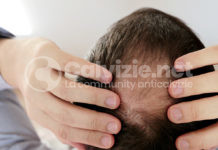This question is very difficult to answer. Statistical research shows that on average 20% of people with alopecia areata report having at least one other blood relative with the condition (Muller 1963, De Weert 1984, Friedman 1981, Shellow 1992). Although this family history of alopecia areata suggests a genetic component for at least 20% of cases, we cannot say just how likely it will pass from generation to generation. Close analysis of family trees shows that very often alopecia areata expressed in one generation does not always reappear in the next. It can be several generations down the line before alopecia areata develops in another individual.
It would seem that even the transfer of susceptibility genes for alopecia areata to offspring does not automatically mean they will have alopecia areata. Perhaps there needs to be an environmental influence, or trigger, that may also activate certain genes. Because there are several genes involved in alopecia areata, not all of the genes may be passed from adult to child. Maybe a few genes are passed on but not enough to allow alopecia areata to develop and so this branch of the family loses the trait entirely. Equally, if parents who are carriers for a few of the alopecia areata susceptibility genes have offspring, the child with both sets of genes may be more likely to develop hair loss.
I should also say here that the statistical data covers all types of blood relations, not just parent to child. In light of this, and the apparent need for environmental influence, the risk of children of an alopecia areata-affected parent developing the condition is much less than 20% – let’s say 4% (a guess/best estimate on my part). This risk is so small that some dermatologists just don’t rate it as significant. Other dermatologists would argue that there are no reliable statistics on family inheritance anyway. One or two reports suggest there is NO significant family history of alopecia areata and this all adds to the confusion (Saenz 1963, Olivetti 1965, Lutz 1988).
Finally, don’t forget that every person is carrying potentially destructive genes for some form of disease. In theory we are each carriers for at least two lethal genes. There are many more serious conditions possible and so when placed in context, transmission of alopecia areata to children should not be seen as a dominant factor. Be aware that there may actually be advantages in having alopecia areata. A recent report suggests people with alopecia areata have a reduced risk of developing type I diabetes compared to the general population (Wang 1994).































